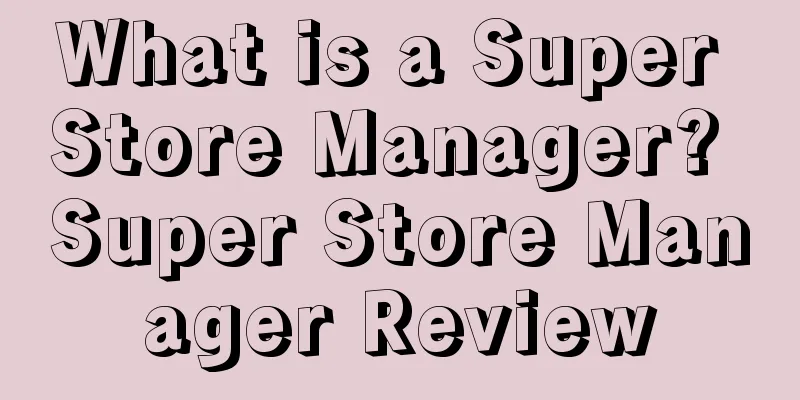Amazon's return policy has changed! Automatic approval? !

|
During the epidemic, Amazon relaxed the delivery performance of our sellers and excluded late shipments, cancellations, and order defects from the score. At the same time, Amazon also made some policy changes for buyers in response to the epidemic, such as extending the return period. Although extending the return period is not a good thing for us, it is understandable as a special policy during the epidemic. Now that the United States is actively resuming work, Amazon has introduced a new change, which will automatically review returns for all professional sellers! Amazon Prepaid Refund Label Program This program called "Prepaid Returns Label" is not a new feature. It has been piloted on a small scale. The content is to directly pass the return application of all sellers participating in the program (provided that the return application is compliant), and automatically assign a return label to the consumer, and Amazon will be responsible for shipping the product back to the seller's return address. Automatically reviewing returns is a bit of a pitfall. Only some self-shipping sellers with large order volumes and high return rates may need this function. It is actually a good idea to keep registering to participate, but Amazon suddenly announced a few days ago that it will automatically register all professional sellers for the program on the 15th. That is to say, after the 15th, all returns of self-delivered orders by professional sellers (compliant) will be automatically approved by Amazon, and the seller will receive an email stating the reason for the buyer's return. Seller approval is only required if the buyer's return does not comply with Amazon's policy. Previously, if the buyer wanted to return a self-delivered order, the seller had to approve the return application and the buyer was responsible for shipping it to the seller's designated return address (usually an overseas warehouse). If the order was to be returned to an Amazon warehouse, a label would need to be generated and attached to the product before it was sent back. The above process is indeed inconvenient for buyers, but Amazon’s new changes do not actually simplify the return process for buyers. When buyers want to return goods, they still need to print and mail the return label themselves. The only improvement may be that the seller’s approval is required again. In the past, after receiving a return application, we would not approve it temporarily but communicate with the buyer first to understand the buyer's return request. Sometimes, after some negotiations, we could make the buyer give up the idea of returning the product and cancel the application. After the return application is automatically approved, the seller loses the initiative before approval, and the probability of negotiating to cancel the return will be greatly reduced . What's more, there are many unreasonable returns that do not meet the seller's return requirements, such as having used them but not wanting them. In this case, automatic approval will cause the seller to lose the value of the goods. Not allowing sellers to participate in decision-making is hegemony In theory, if a buyer returns a damaged product, the seller should be able to refuse the return, but in practice it is difficult. I believe many sellers have encountered unreasonable returns, and the returned goods directly become unsaleable damaged inventory after being returned to the warehouse. If the loss of the goods value is deducted from the refund in this case, the buyer will actually get less money back from me, which can easily lead to negative reviews or even complaints from the buyer. In order to avoid more trouble, most sellers will bear this part of the loss themselves. If there are not many returns, it is not a big deal. If the return rate is very high, this situation can eat up a lot of profits. Buyers can apply for returns without the seller's consent . This is actually the hegemony that Amazon imposes on third-party sellers. It ignores the needs of sellers in order to simply optimize the consumer experience. Moreover, this automatic algorithm has certain bugs. Some American sellers have reported that their jewelry products fall into the "non-returnable category" stipulated by Amazon, but their return orders are still automatically approved by the algorithm. Overall, this is a change that harms the interests of sellers and does not simplify the return process for buyers. Although there is a lot of opposition at present, Amazon is not likely to "admit mistakes" in a certain way, so students with a high return rate should still prepare early. I suggest that everyone should include returns in the profit margin and leave enough profit space to prevent returns from eating up the profits and wasting your work. |
<<: The closure of the store was a mistake? Amazon confirmed
>>: Many FBA centers are out of stock! Does Amazon still have a chance?
Recommend
The year-end general account is in disarray and the balance is abnormal! The aftermath of Amazon's delayed payment? !
The impact of Amazon’s delayed payment policy, wh...
What is Thunderbird IP? Thunderbird IP Review
Shenzhen Thunderbird Intellectual Property Co., Lt...
Meta announces layoffs of tens of thousands of employees and cuts 5,000 vacancies
It is learned that on March 14, Meta CEO Mark Zuck...
What is FanMart? FanMart Review
FanMart is an e-commerce shopping app under Chongq...
What is Bohowe? Bohowe Review
bohowe is the world's leading online retailer ...
What is Cyberjaya International? Cyberjaya International Review
Saicheng International Logistics Co., Ltd. ("...
Is this category the top seller? The level of sales is almost as bad as the three lucky items in the electronics category. Is the entire category clearing out the stock?
Anonymous user My C position I recently did a ma...
What is Gleebill? Gleebill Review
Gleebill Global Solutions Inc. (Gleebill) is a fin...
Want to make some quick money? Start by choosing the right popular product on Amazon!
text The four core elements of e-commerce are: pr...
What is Kaboompics? Kaboompics Review
Kaboompics is a free, high-quality image resource ...
How does Amazon launch new products? (Practical)
first step Before launching a new product, you mu...
Unlimited cloning of Amazon accounts? Bribing laymen and coercing employees, the registration process is too complicated!
As the internal competition in the cross-border e-...
What is Staples? Staples Review
Staples is a well-known office supply company in t...
What is MAIMAI DESIGN? MAIMAI DESIGN Review
MAIMAI DESIGN is committed to providing software s...
U.S. e-commerce sales to reach $1.2 trillion by 2024
According to the latest report released by FTI Con...




![[Operational Technology Discussion] Now that you have obtained a selected tag for a long-tail word, how can you continue to improve it and turn it into a selected tag for a core word?](/upload/images/67e77937ebece.webp)




